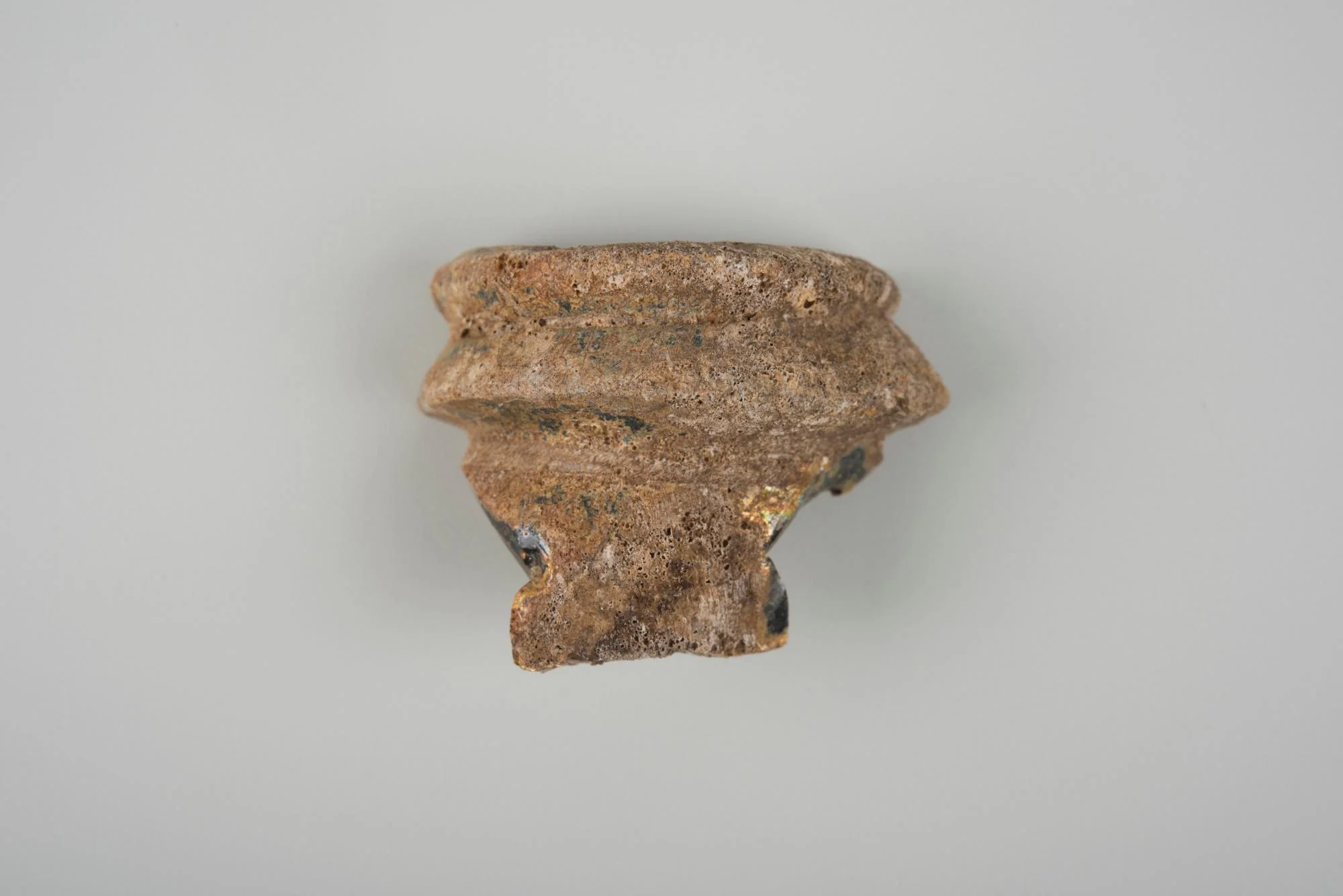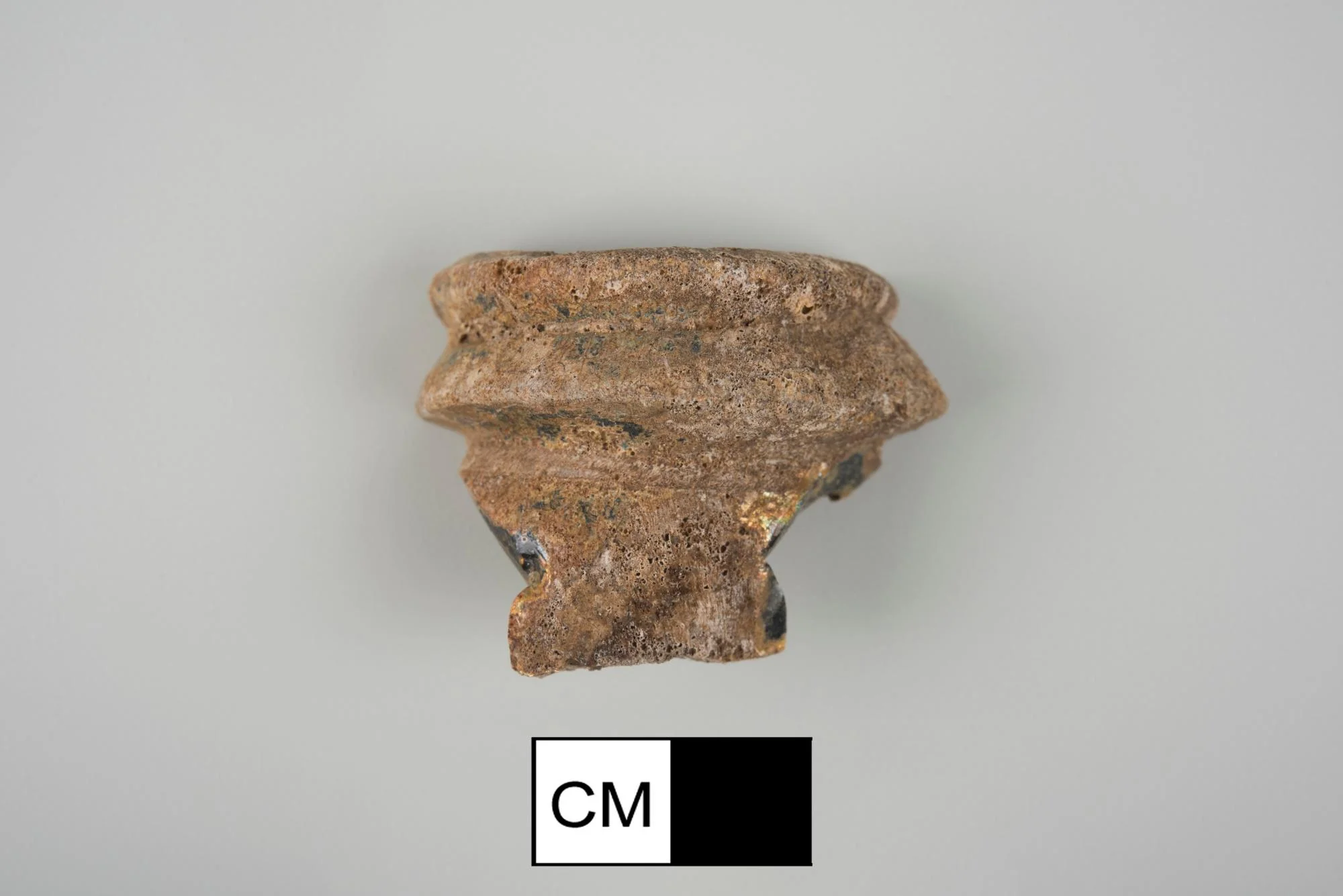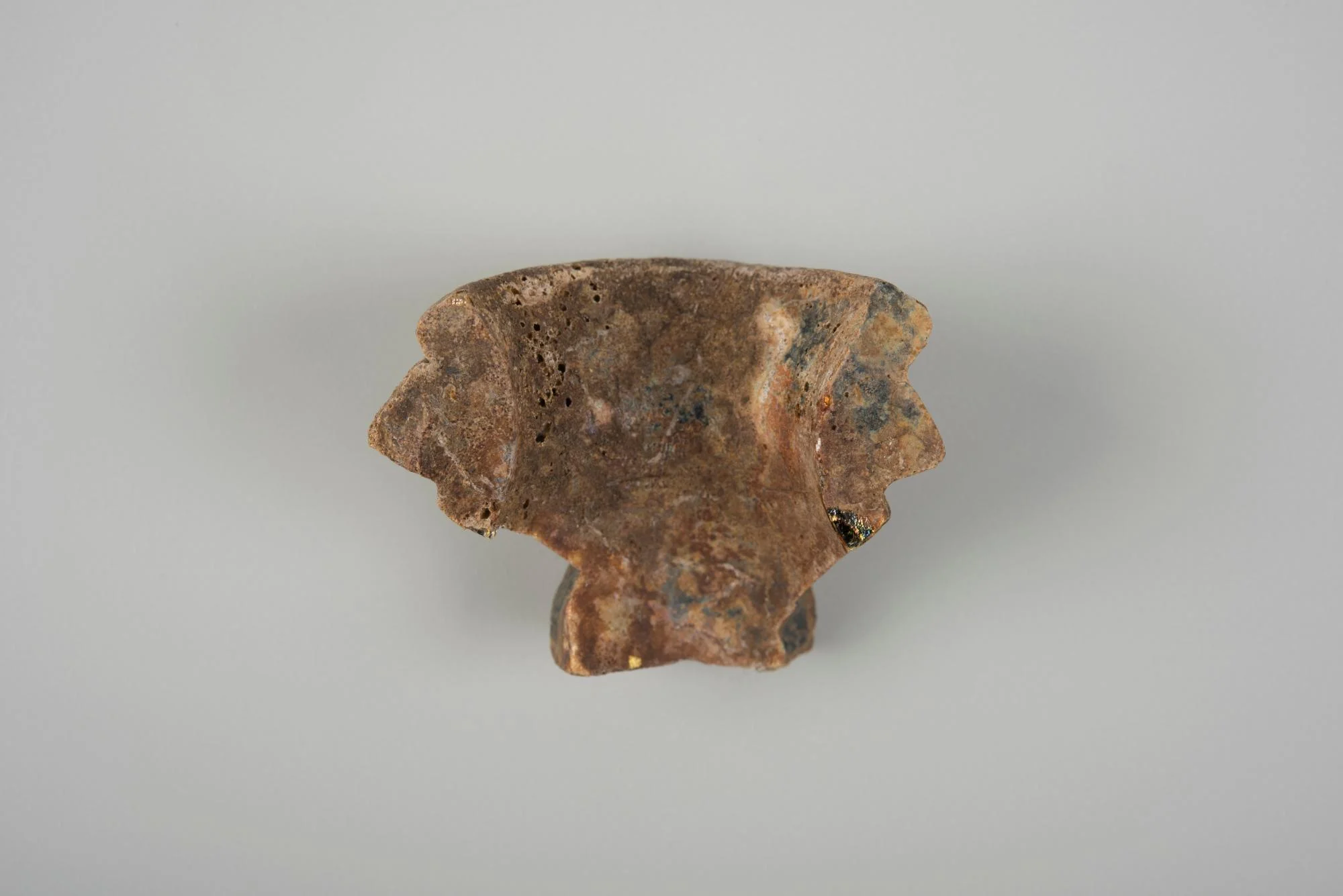Notes
This dark green glass fragment is from a wine bottle finish comprised of an irregular lip and V-shaped string rim. The term finish refers to the opening where a cork was inserted and secured, often with a small length of copper alloy wire. The finish is comprised of both the lip, to hold the cork, and the string rim, to anchor the wiring to the bottle. Finishes were formed through the addition of molten glass or the manipulation of the reheated neck after the bottle was completely formed.
Wine bottles such as this were primarily imported from Britain and Europe in the eighteenth century, and were commonly used to consume wine or liquors in colonial households of all statuses. While the name of the object speaks to its primary function as a container for alcohol, the sheer quantity of these vessels at eighteenth century domestic sites meant they were easily repurposed to hold other liquids such as water or even milk.
Object Type
Has it Been Conserved?
No
Where Was It Found?
Project Site: House for Families [more details]
Material
Vessel
Manufacturing Technology
Form
Completeness
Date
18th century
Country of Origin
Dimensions
35mm x 0mm x 40mm (W x H x L)
Illustration shows object in comparison to the size of a quarter
Weight
12.9 gram(s)
Object Number
1781860. WBG V.13
DAACS Number
1781860
Project: House for Families
The structure identified as the “House for Families” on the 1787 Vaughan plan likely housed the majority of the enslaved population living at the Mansion House Farm for much of the second half of the eighteenth century. The building was in existence from circa 1760 until it was demolished in late 1792 or early 1793. The archaeological evidence for the structure consisted of a brick-lined storage cellar (44FX762/40-47) measuring roughly six feet by six feet. Historically the cellar served as a handy trash receptacle once it ceased to be used for its original storage function, and through extensive excavation has yielded an extremely rich assemblage of household refuse. The analysis of these remains offers the opportunity to study important aspects of the daily lives of Mount Vernon's enslaved community.
See All Objects From this Dig


 Glass
Glass